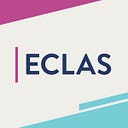By Dr Amanda Rees, ECLAS

Theology and science have got a lot in common. For one thing, they’re often considered too hard, or too abstract, for ordinary people to understand. Their study is — apparently — reserved to those rare brains who can understand the complexity of the natural or social world. Ordinary people can only begin to understand a simplified version of these subjects. But despite this stereotype, both subjects also form part of our common human heritage, helping us to ask and answer key questions about what makes up the world around us, as well as how and why it works. Messy Church Does Science, a programme funded by ECLAS through our Scientists in Congregations grants, exemplifies this co-constitution of science and faith.
Beginning in 2017, Messy Church Does Science developed a series of science-based activities that would enable people to learn more about faith through encounters with the natural world. Centred in key themes (‘water’, ‘air’, ‘plants’, ‘light’, ‘the body’), and with input from both scientists and theologians, these projects help people discover scientific facts and principles through practical hands-on experience of testing hypotheses and constructing experiments. At the same time, participants are supported in reflecting on the philosophical and theological implications of what they are doing, and what it means for their broader understanding of the world around them. While they’re primarily aimed at children and families, anyone can take part.

In response to the current pandemic, Messy Church has Gone Wild, taking their congregations and these activities outside to explore the living world around us. A tree, for example, can help us analyse the nature of community life, as different species cooperate and compete in its roots, trunk, branches and leaves, eat its fruits and seeds, cultivate it or chop it down. It can provide different perspectives (up high? down low?) from which to regard the world around it, while its height, circumference and (if felled) number of trunk rings can aid us in working out mathematical principles and practical trigonometry.
A forest can be a source of danger, refuge and resource (again depending on perspective), while burning wood — fire — is at the heart of our understanding of human origins. This kind of object-based, thematically oriented, empirical learning also gives us metaphors and tools for understanding theological accounts of the relationship between individuals and their social and ecological communities. Perhaps most significantly of all, it gives us a picture of science itself that is much more rounded and grounded in ethics and morality than popular stereotypes might suggest.

Projects like this show that faith and religion are complementary forces, not either/or opponents. More than that, though — they demonstrate that science is not a mysterious force accessible only to those with top qualifications and particular kinds of brains. Instead, it’s a human endeavour, undertaken by people working together in the spirit of wonder and inquiry. In particular, as these public activities synergise with school teaching, children can remind their parents and carers of often-forgotten scientific skills and knowledge. It gives us a cross-generational interdisciplinary model of learning that places science and faith together in the heart of a community-based effort to understand the world around us.
In the 21st Century, church is a place where science happens.
